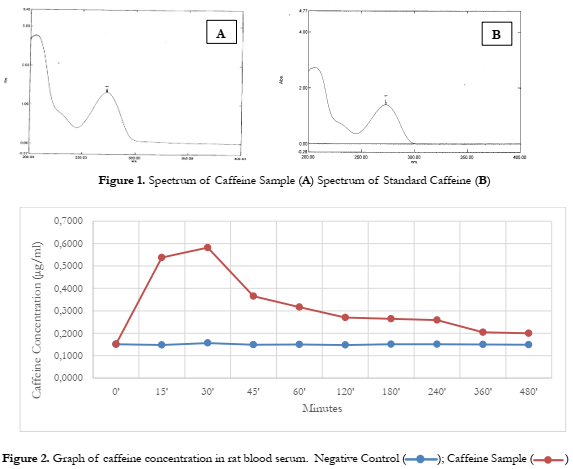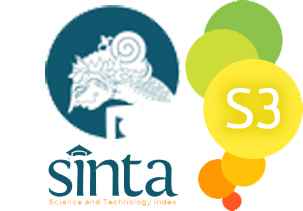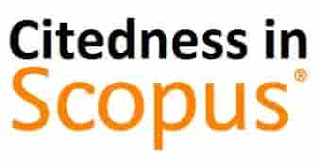Determination Levels of Caffeine Isolated from Robusta Coffee Beans from Pagar Alam in Wistar Rat Blood
Abstract
Coffee provides a genuine source of caffeine. Caffeine can have a variety of pharmacological effects on both central and peripheral nervous systems and most of these effects are related to the antagonistic mechanism at adenosine receptors. The most prominent effect of caffeine remains stimulation of brain function, improving mood and physical performance. Robusta coffee obtains an intense level of caffeine and Pagar Alam City is one of the cities in Indonesia that produces robusta coffees. This study aims to identify and characterize caffeine isolated from Pagar Alam robusta coffee beans using thin-layer chromatography methods, UV-Visible spectrophotometry and to determine caffeine levels in wistar rat blood using the ELISA method. This method is cost-effective, familiar to perform and has a considerable degree of accuracy and reproducibility. The isolated samples have similar characteristics to standard caffeine with an Rf value of 0.77, a maximum wavelength at 273 nm with the absorbance of 1.3 and from caffeine profile in the blood sample we obtained the maximum sample concentration in blood 0.582 ± 0.249 μg/ml and the time needed to reach the maximum concentration is 30 minutes.
References
Andrén-Sandberg, A. (2016). Caffeine As a Substance for Better Performance. Anti-Doping Library, January.
Aydin, S. (2015). A short history, principles, and types of ELISA, and our laboratory experience with peptide/protein analyses using ELISA. Peptides, 72, 4–15. https://doi.org/10.1016/j.peptides.2015.04.012
Bahrami, S., Shahriari, A., Tavalla, M., Azadmanesh, S., & Hamidinejat, H. (2016). Blood Levels of Oxidant/Antioxidant Parameters in Rats Infected with Toxoplasma gondii. Oxidative Medicine and Cellular Longevity, 2016. https://doi.org/10.1155/2016/8045969
Carregaro, A. B., Woods, W. E., Tobiri, T., & Queiroz-Neto, A. (2001). Comparison of the quantification of caffeine in human plasma by gas chromatography and ELISA. Brazilian Journal of Medical and Biological Research, 34(6), 821–824. https://doi.org/10.1590/S0100-879X2001000600019
Chaugule, A., Patil, H., Pagariya, S., & Ingle, P. (2019). Extraction of Caffeine. International Journal of Advanced Research in Chemical Science, 6(9), 11–19. https://doi.org/10.20431/2349-0403.0609002
dePaula, J., & Farah, A. (2019). Caffeine Consumption through Coffee: Content in the Beverage, Metabolism, Health Benefits and Risks. Beverages, 5(2), 37. https://doi.org/10.3390/beverages5020037
Gebrewold, F., & Geletu, G. (2018). Chemistry of Caffeine in Coffee and Its Determination Using UV / Vis Spectrophotometer : A Review Article. 10(1), 23–27.
Goldemberg, D. C., Antonio, A. G., Farah, A., & Maia, L. C. (2014). Coffea canephora: A Promising Natural Anticariogenic Product. A Promising Natural Anticariogenic Product. In Coffee in Health and Disease Prevention. Elsevier Inc. https://doi.org/10.1016/B978-0-12-409517-5.00069-3
Hammado, N., & Illing, I. (2013). Identifikasi senyawa bahan aktif alkaloid pada tanaman lahuna (Eupatorium odoratum). Jurnal Dinamika, 04(2), 1–18.
Iwano S, S. C. (2015). Species Differences in the Pharmacokinetic Parameters of Cytochrome P450 Probe Substrates between Experimental Animals, such as Mice, Rats, Dogs, Monkeys, and Microminipigs, and Humans. Journal of Drug Metabolism & Toxicology, 05(06). https://doi.org/10.4172/2157-7609.1000173
Maramis, R. K., Citraningtyas, G., & Wehantouw, F. (2013). Analisis Kafein Dalam Kopi Bubuk Di Kota Manado Menggunakan Spektrofotometri Uv-Vis. Pharmacon, 2(4). https://doi.org/10.35799/pha.2.2013.3100
Martina, S. J., Ramar, L. A. P., Silaban, M. R. I., Luthfi, M., & Govindan, P. A. P. (2019). Antiplatelet effectivity between aspirin with honey on cardiovascular disease based on bleeding time taken on mice. Open Access Macedonian Journal of Medical Sciences, 7(20), 3416–3420. https://doi.org/10.3889/oamjms.2019.431
Mohammed, M. J., & Al-Bayati, F. A. (2009). Isolation, identification and purification of caffeine from Coffea arabica L. and Camellia sinensis L.: A combination antibacterial study. International Journal of Green Pharmacy, 3(1), 52–57. https://doi.org/10.4103/0973-8258.49375
O’callaghan, F., Muurlink, O., & Reid, N. (2018). Effects of caffeine on sleep quality and daytime functioning. Risk Management and Healthcare Policy, 11, 263–271. https://doi.org/10.2147/RMHP.S156404
Pabendon, B., Penelitian, B., Industri, T., Raya, J., Km, P., Indonesia, S., Penelitian, B., Serealia, T., Ratulangi, J., Kotak, N., & Indonesia, M. (2017). Genetic Variability Among Indigenous Robusta Coffee Clones from Pagar Alam Based on SSR Marker Analysis. Jurnal Tanaman Industri Dan Penyegar, 4(3), 133–134. https://doi.org/10.21082/jtidp.v4n3.2017.p133-134
Ramalakshmi, K., & Raghavan, B. (1999). Caffeine in coffee: Its removal. Why and how? Critical Reviews in Food Science and Nutrition, 39(5), 441–456. https://doi.org/10.1080/10408699991279231
Roy, A., & Das, B. (2015). Effects of caffeine on health: A review. Research Journal of Pharmacy and Technology, 8(9), 1312–1319. https://doi.org/10.5958/0974-360X.2015.00237.1
Sakamoto, S., Putalun, W., Vimolmangkang, S., Phoolcharoen, W., Shoyama, Y., Tanaka, H., & Morimoto, S. (2018). Enzyme-linked immunosorbent assay for the quantitative/qualitative analysis of plant secondary metabolites. Journal of Natural Medicines, 72(1), 32–42. https://doi.org/10.1007/s11418-017-1144-z
Sarfraz, A., Simo, A., Fenger, R., Christen, W., Rademann, K., Panne, U., & Emmerling, F. (2012). Morphological diversity of caffeine on surfaces: Needles and hexagons. Crystal Growth and Design, 12(2), 583–588. https://doi.org/10.1021/cg101358q
Singh, K. K., Rauniar, G. P., & Sangraula, H. (2012). Experimental study of neuropharmacological profile of Euphorbia pulcherrima in mice and rats. Journal of Neurosciences in Rural Practice, 3(3), 311–319. https://doi.org/10.4103/0976-3147.102612
Suwiyarsa, I. N., Nuryanti, S., & Hamzah, B. (2018). Analisis Kadar Kafein dalam Kopi Bubuk Lokal yang Beredar di Kota Palu. Jurnal Akademika Kimia, 7(4), 189. https://doi.org/10.22487/j24775185.2018.v7.i4.11943
Wilantari, P. D. (2018). Isolasi Kafein Dengan Metode Sublimasi Dari Dengan Fraksi Etil Asetat Serbuk Daun Camelia Sinensis. Jurnal Farmasi Udayana, 8(1), 53. https://doi.org/10.24843/jfu.2018.v07.i02.p03
Zahra, F. az, Aliyah, B., & Nurhadi, dan L. oktavian. (2019). Ekstrak Kafein Ampas Kopi Sebagai Inhibitor Korosi Baja Murni Dalam. Sains Dan Teknologi, 002(2019), 1–9.
Zarwinda, I., & Sartika, D. (2019). Pengaruh Suhu Dan Waktu Ekstraksi Terhadap Kafein Dalam Kopi. Lantanida Journal, 6(2), 180. https://doi.org/10.22373/lj.v6i2.3811























